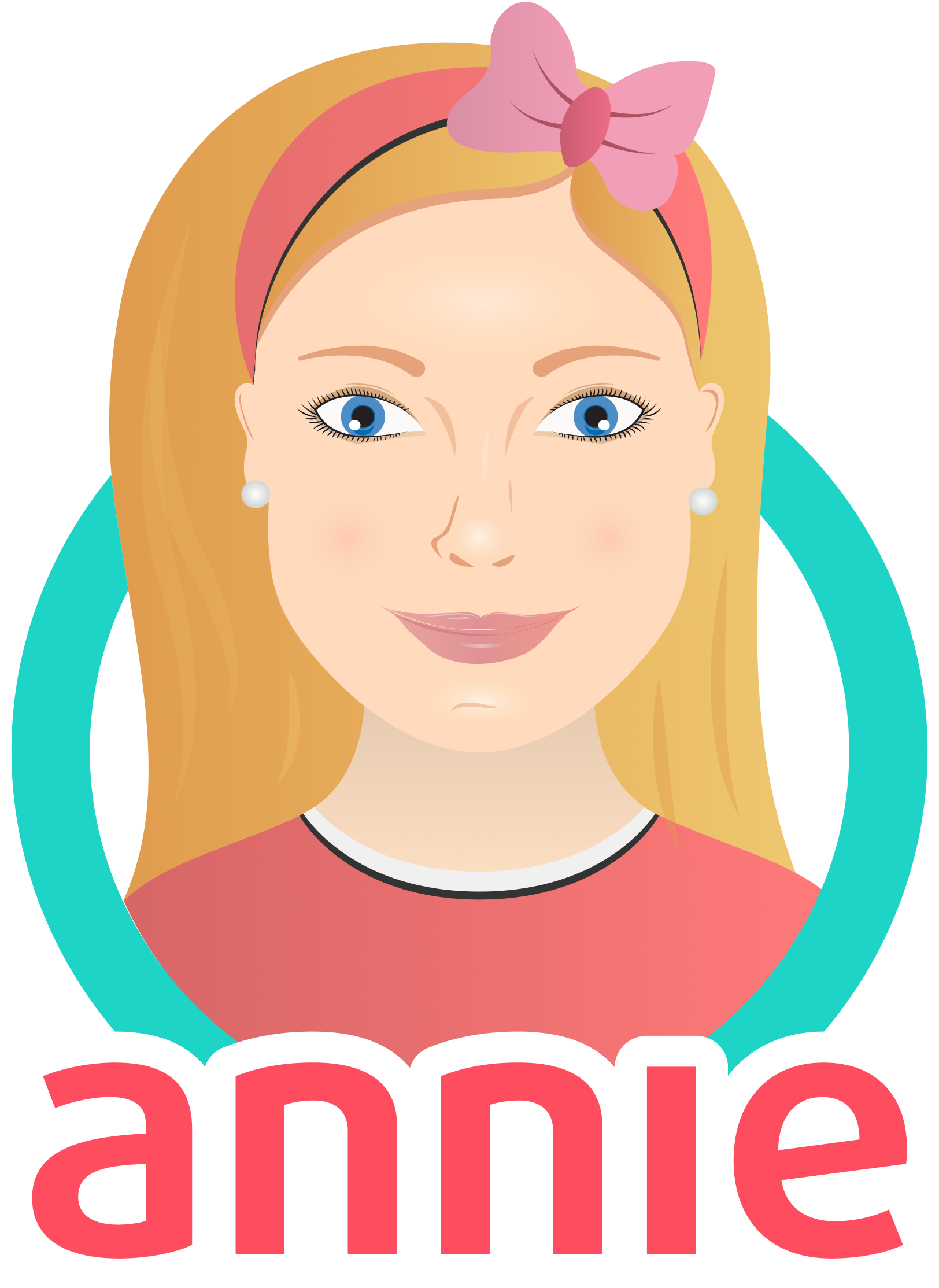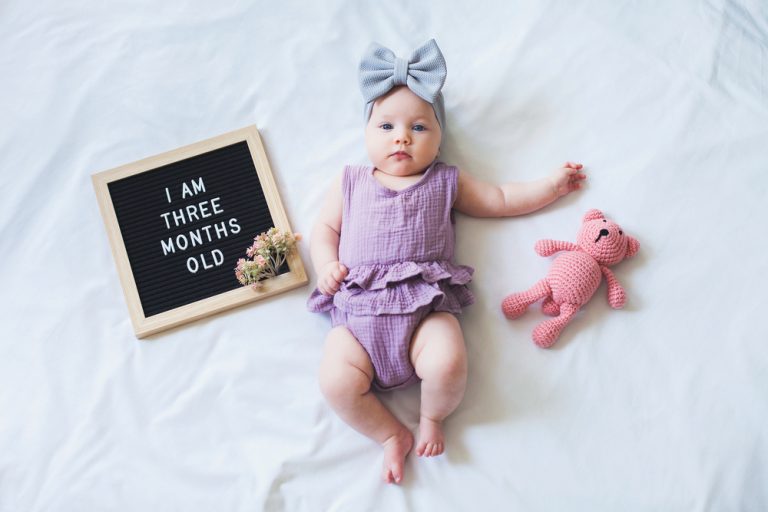
Baby’s Development – 3 Month Milestones
- Created:
23. 3. 2021 - Updated:
4. 10. 2023
The period of the first year of life is called the infancy. At this time, the baby develops rapidly. Already in the third month of life, individual differences between children in behavior, experience and also in the overall development trend are visible.
<< Back to 2nd Month
Go to 4th Month >>
The experience that the child encounters contributes to creating the foundations needed for the further development of child’s interaction with the world. An example is the reactivity of a child. A restless and lively child will elicit different parental reactions than a passive and apathetic child, and therefore children’s experiences with adults will vary. Of course, the personalities of the parents and their behavior towards the child and what they expect from the child are very important.
During the third month of life, the baby is well motivated to receive suggestions from his surroundings. The baby is open to everything that comes to him. However, not all stimuli interest him in the same way and to the same extent. The initial experiences, and especially the reactions to them and the emotional response that the child has experienced, can suppress or strengthen the child’s innate curiosity. Therefore, it is very important that the child is dominated by positive stimulation, which promotes his openness and trust in the world and encourages him to willingly accept the stimuli that come to him from the surroundings.
Compared with the newborn baby, we can see that the bends of the limbs disappear – the arms are more and more often outstretched and the hands open more and more. The baby’s movements become smoother and softer compared to the jerky movements of the newborn. And they are also more targeted and deliberate.
At the end of the 3rd month of life, the baby learns to control the movements of the head. The baby can support the hands without the elbows touching the pad and at the same time have his head held high.
This month is also interesting because the child discovers his hand with his hand – which means that he often catches the other hand with one hand. Baby touches them with each other hand, he plays with them. It is a very important development step. Very soon after, the child begins to discover his hands with his eyes. This is an important step in becoming aware of oneself. Then baby learns to guide his hand quickly to the objects he sees and grasp them.
At the end of the third month, the baby will learn to control the muscles of the upper torso. Some children can turn from lying on their back to lying on their side.
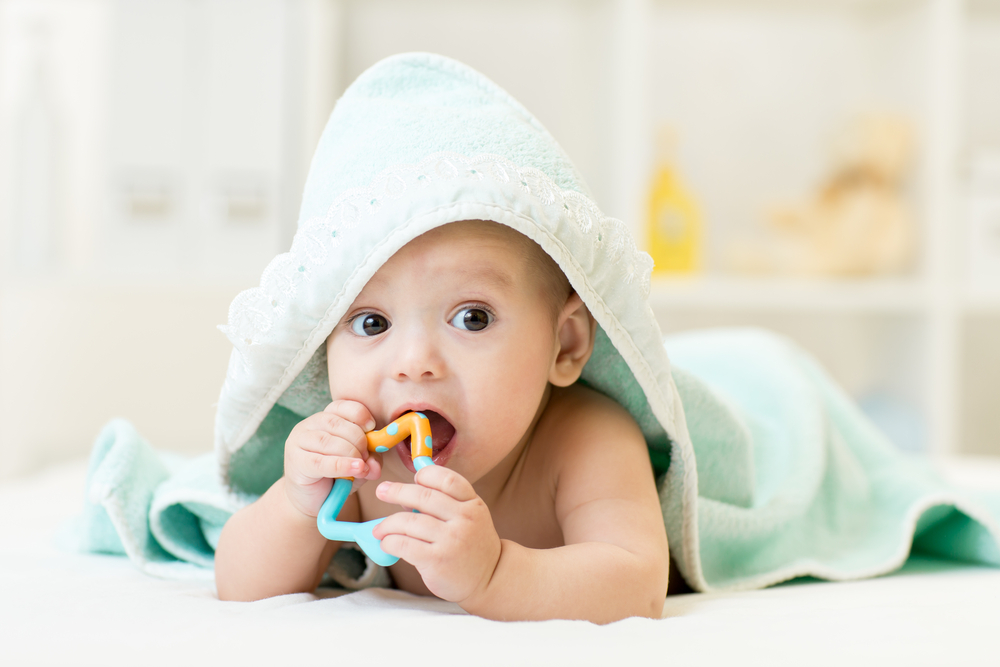
Examples of supporting the development
- When bathing and changing diaper, we allow the child enough physical activity.
- Whenever possible we leave the child naked on the mat to kick freely with his feet and move his hands.
- We support the movement of hands, feet and head by massaging the skin, thus developing the child’s touch.
TIP N.1: When the baby kicks with his feet, we help with a rhyme.
TIP N.2: We can also stimulate the baby by stroking with various soft fabrics, pleasant to the touch, or a soft feather, while naming parts of the body, for example also in the form of a rhyme.
Important: We monitor the child’s reactions – we stop the activity if there is a sign of resentment or fatigue.
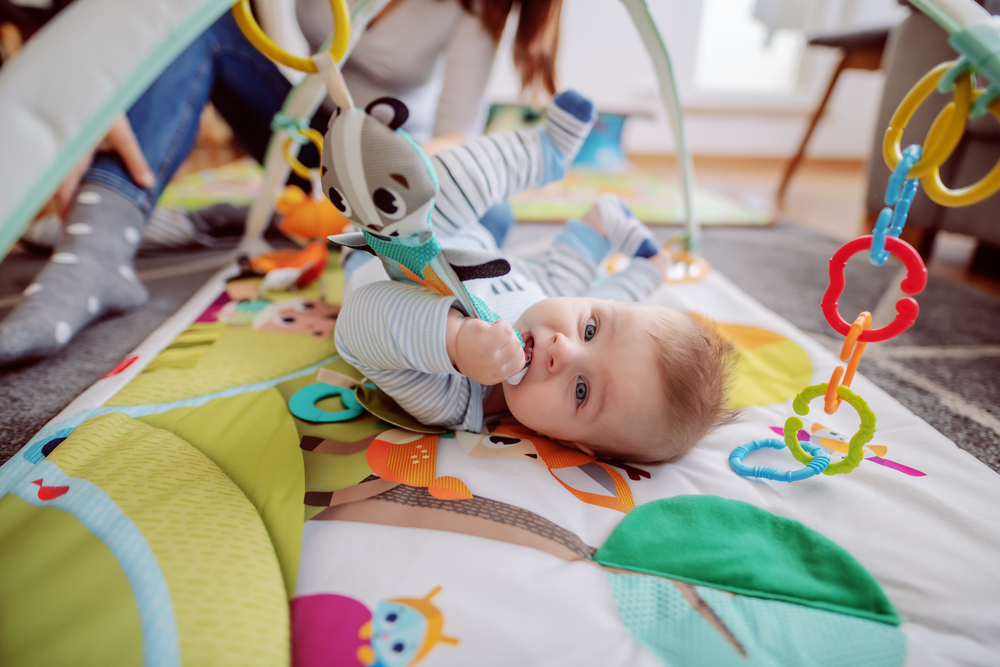
Lifting head in supine position
We place the baby on the tummy and adjust its arms so that they lie bent and pressed against the chest or slightly below the chest. We turn the head face down on the mat, the baby should raise his head. Leave it on the abdomen for at least 2-3 minutes. When the baby is satisfied, we can keep him that even longer. We put the baby on the tummy as often as possible.
Important: The baby will not raise his head just to see something. That is why we attract the child with something interesting.
How to help the baby lift the head?
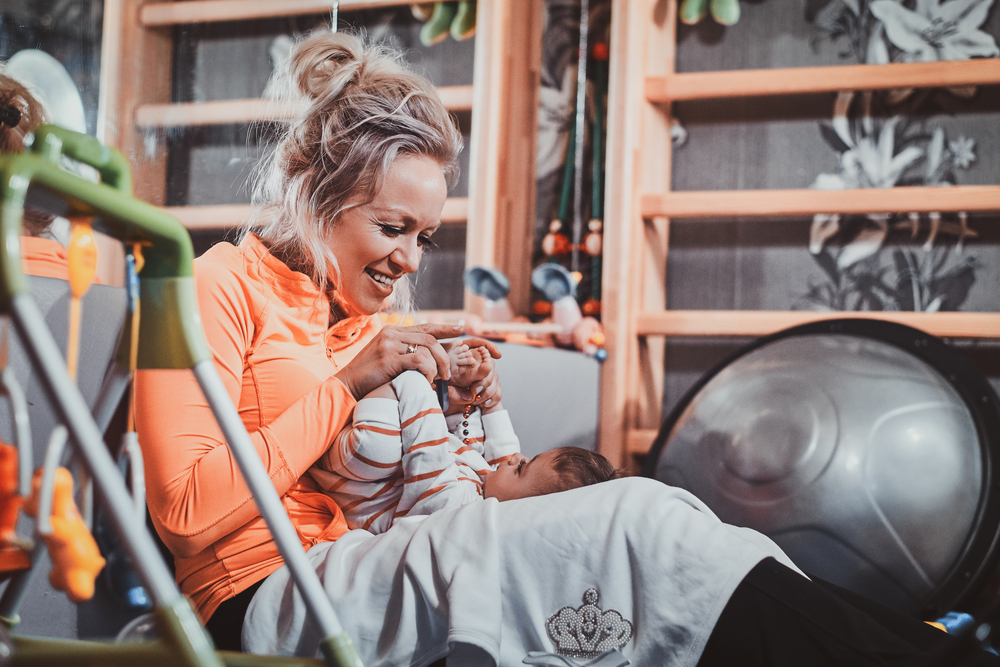
Baby’s massages
Massage contributes to the development of the child’s motor skills. It is suitable for calming the baby, it can have a good effect on the quality of sleep, or on the contrary it can increase muscle tension. However, the main goal of the massage is the overall improvement and harmonization of the baby.
The best time for massaging is the evening before bathing, because the bath will only prolong the effect of the massage and relaxation. We initially massage the baby for 1-5 minutes, later we extend the time to 15-20 minutes (according to the baby’s interest).
TIP N.3: During the massage, talk to the baby and watch its manifestations. Be relaxed: your well-being is passed on to the baby.
Important: Do not use any essential oils until the age of six years, only natural virgin oils without fragrant essences.
How to massage the baby? Here you find the best tips!
Final Tip: Capturing Cherished 3-Month Milestones with Annie Baby Monitor
As your baby reaches the remarkable 3-month milestone, make these precious moments last with the help of Annie Baby Monitor.
This baby monitor is unlike the usual ones in the market. With Annie, you can keep an eye on your baby and capture all those memorable moments during their life. Isn’t that amazing?
From those adorable first giggles to their growing curiosity about the world. Keep track of all special milestone videos and snapshots.
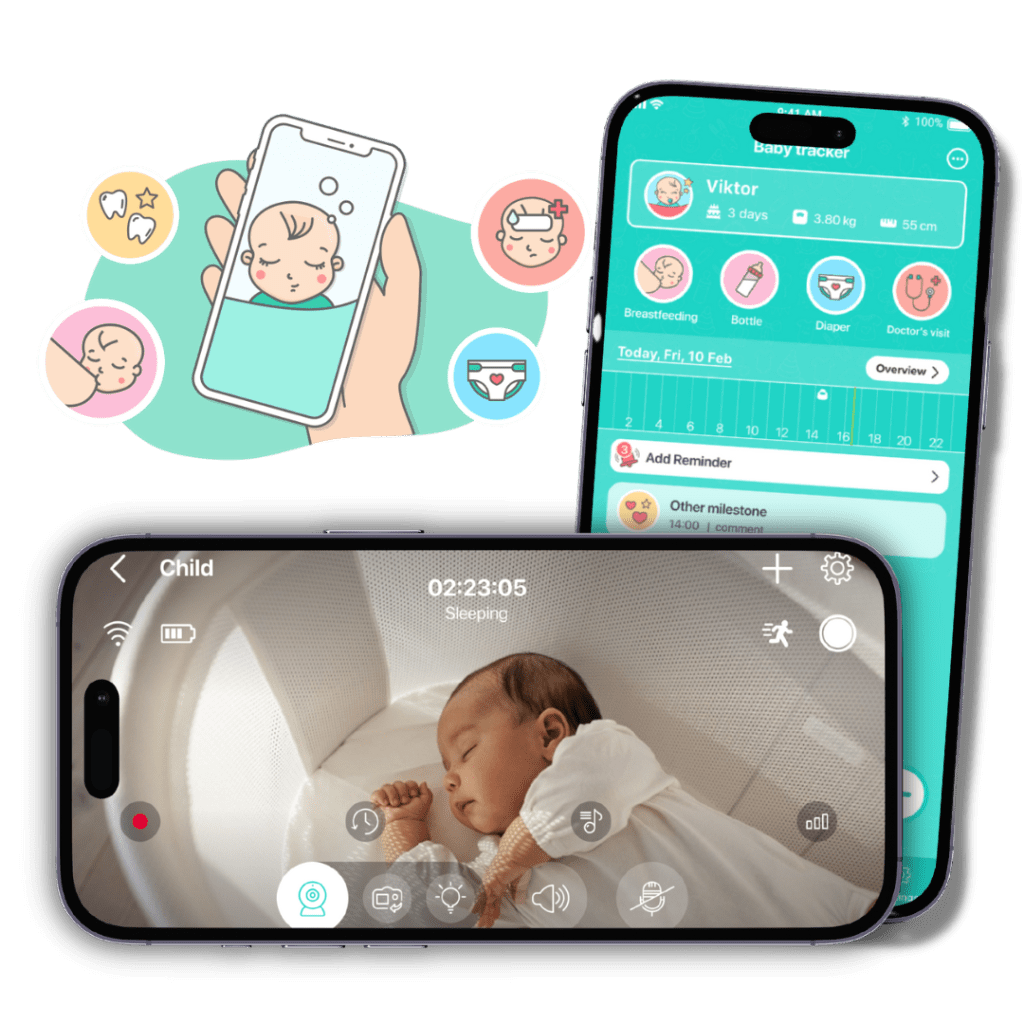
Have you ever thought about how to keep track of your baby’s development? If so, I can help you with that. Explore our article on how to make the most of Annie Baby Monitor.
Don’t miss the chance to create lasting memories. Get your Annie Baby Monitor.




